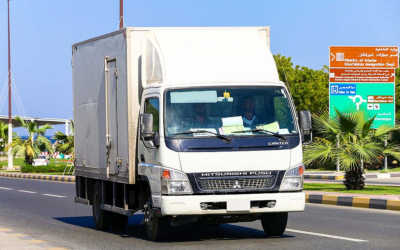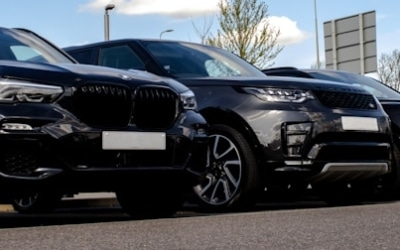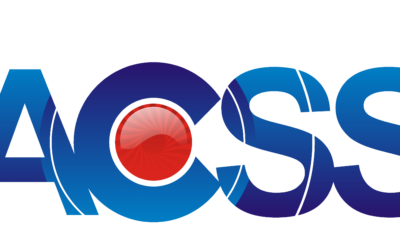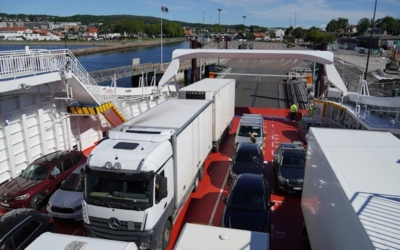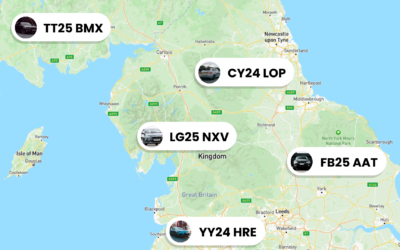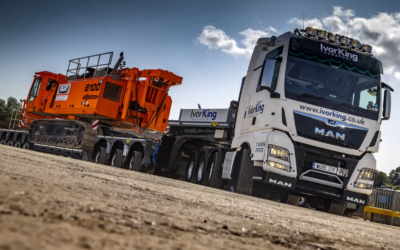IoT in Fleet Management: Future Trends for Fleet Managers
If you’re running a fleet, you’ve probably heard the buzz about IoT in Fleet Management. It isn’t just another tech fad — it’s rewriting how fleets operate, cut costs and keep drivers safe. In this piece I’ll walk you through what IoT really means for fleets, the technologies to adopt now, the operational wins you can expect, and practical steps to roll it out without blowing the budget. Read on — and by the end you’ll have a clear roadmap to make connected vehicles work for you.
Why IoT Matters in Fleet Management
What “IoT in fleets” means
IoT in Fleet Management describes a network of devices — telematics units, GPS modules, onboard sensors, gateways and cloud services — that collect and share data in real time. For a fleet manager that means continuous visibility into vehicle location, health and driver behaviour instead of relying on spot checks or paper logs. It’s the difference between reacting to a breakdown and preventing it. Unlike older fleet systems that were siloed or manual, connected systems give you a single pane of glass to manage operations, maintenance and compliance.
Market and operational drivers
Rising fuel costs, tight margins and tougher regulatory scrutiny are pushing fleets to seek smarter, data-driven solutions. Labour shortages and the pressure to deliver faster ETAs only increase the need for automation. Customers expect reliable, trackable deliveries, and insurers are offering better rates to fleets that can prove safer, monitored operations. In short: the business drivers for adopting IoT are strong — and growing.
High-level benefits
Deploying IoT delivers measurable wins: improved fuel efficiency through smarter routing, reduced downtime via predictive maintenance, safer driving with behaviour monitoring, and tighter compliance reporting. You’ll also get better asset visibility — everything from trucks to trailers and portable equipment — which improves utilisation and reduces loss. Ultimately, IoT turns fleet data into actionable insights you can use to cut costs and boost uptime.
Core IoT Technologies Transforming Fleets
Telematics, GPS and real-time tracking
Telematics remains the backbone of modern fleets. Units combine GPS location with vehicle telemetry — speed, idle time, engine codes — and stream this to cloud platforms. Real-time Tracking enables geofencing, live ETAs and route verification. Integrating telematics with workforce tools lets dispatchers make smarter decisions and gives customers the visibility they expect. If you haven’t already, consult guides like our Telematics Adoption Playbook for Fleet Managers for a practical rollout approach.
Onboard sensors and predictive maintenance
Modern fleets use OBD-II/CAN data, tyre-pressure sensors, temperature probes for cold chains, and vibration sensors to detect looming faults. Feeding this into predictive analytics reduces unplanned downtime — shifting you from calendar-based servicing to condition-based maintenance. For more on setting this up and measuring ROI, see our deep dive on Predictive Maintenance for Fleets.
Connectivity, edge computing and 5G
Connectivity options vary (LTE, NB-IoT, 5G) and choosing the right one depends on data volume and latency needs. Edge computing — processing data in-vehicle before sending summaries to the cloud — reduces bandwidth costs and enables immediate safety actions like in-cab alerts. As 5G becomes mainstream, expect lower latency and new possibilities such as high-res video streams from Dash Cameras for incident review and coaching.
Key Use Cases and Operational Impacts
Route optimization and dynamic dispatch
IoT gives you near real-time traffic, vehicle status and load information that modern routing engines can use to reassign jobs dynamically. The result? Shorter routes, fewer empty miles and better adherence to time windows. Tools that combine telematics with AI-driven routing, like our piece on AI-Driven Telematics Route Optimization, are particularly effective for demand peaks and tight schedules.
Safety and driver behaviour monitoring
Use in-cab alerts, driver scoring and video-telematics to coach behaviour and reduce incident rates. Safer fleets benefit from lower insurance premiums and better driver retention. If you’re nervous about driver pushback, take a transparent approach: show how data is used for coaching, not punishment, and involve drivers in the feedback loop. That helps with buy-in and long-term cultural change.
Asset tracking and utilisation
IoT isn’t just for vehicles. Track trailers, plant, and high-value tools to reduce loss and optimise utilisation. Temperature and humidity sensors protect cold-chain deliveries. Better utilisation means fewer assets to buy, lowering TCO. Linking asset data to your enterprise systems improves planning and lifecycle decisions, so you get a clearer picture of where every asset sits and how it’s performing.
Want to see how this looks in practice? If you’d like a walkthrough, book a demo with Traknova and we’ll show you live dashboards, driver coaching tools and predictive maintenance alerts tailored to your fleet.
Implementation Considerations and Challenges
Data management and system integration
IoT generates a lot of data fast. You’ll need pipelines, data models and integrations with systems like your TMS, ERP or CMMS. Plan for data cleansing, consistent timestamps and common vehicle identifiers so your reports are accurate. Start with a pilot that focuses on a single pain point (eg. downtime or routing) and expand once integration patterns are proven.
Cybersecurity and data privacy
Connected fleets are attractive targets. Secure OTA updates, encrypted data links, and robust identity and access management are table stakes. For a practical checklist, review our Fleet Cybersecurity Guide and ensure any vendor can demonstrate secure development and incident response practices. Also consider driver privacy and local regulations — be clear on what data you collect and why.
Scalability, total cost and ROI measurement
Hardware, connectivity and platform fees add up. Budget for device replacements, SIM changes and integration time. Define KPIs early — fuel savings, reduced breakdowns, improved utilisation — and track them. Use short pilots to validate assumptions and calculate payback. Our Telematics ROI guide can help you build a convincing business case for stakeholders.
Best Practices and Future Trends for Fleet Managers
Practical rollout roadmap
Start small: pick a pilot group with clear pain points, measure baseline KPIs, and set realistic targets. Align stakeholders — operations, maintenance, safety and IT — and communicate results transparently. Training and driver involvement are critical to success. Scale in waves, learn from each phase, and standardise processes as you go. For change management tips, see our Driver Retention guidance.
Emerging capabilities to watch
Keep an eye on AI-driven analytics, digital twins for vehicle and route simulation, V2X communications and tighter integration with electrification efforts. If you’re planning EVs, combine telematics with charging and energy management — our Fleet Electrification Checklist is a useful starting point. These advances will help you proactively manage costs and prepare for autonomous features as they mature.
Policy, standards and ethical considerations
Regulation is evolving. You’ll need to consider data ownership, retention policies and the ethics of continuous monitoring. Be proactive: publish an internal policy on how driver data is used and ensure compliance with relevant privacy laws. Transparency builds trust and helps avoid legal and cultural friction down the line.
Conclusion
IoT in Fleet Management is no longer optional — it’s how modern fleets compete on efficiency, safety and reliability. Start with focused pilots, secure your stack, and scale with clear KPIs. The tools are ready; the results are proven. If you want to move faster and mitigate risk, a guided demo is the quickest way to see what’s possible.
Book a demo with Traknova today to see live dashboards, predictive maintenance scenarios and driver coaching in action. If you prefer a conversation first, contact us and we’ll arrange a tailored consultation.
FAQs
How quickly can I expect ROI from an IoT rollout?
It depends on the focus. For route optimisation and fuel savings you can see measurable gains within weeks. Predictive maintenance payback often appears within months once failure patterns are identified. Use a pilot to get precise estimates for your fleet.
Will drivers resist increased monitoring?
Some will, initially. Mitigate pushback by being transparent, using data for coaching not punishment, and involving drivers in the process. Highlight benefits such as fairer performance reviews and quicker support when issues arise.
How do I handle data security for connected vehicles?
Encrypt telemetry in transit and at rest, ensure secure OTA updates, restrict access with role-based permissions, and choose vendors with strong security credentials. See our Fleet Cybersecurity Guide for a practical checklist.
Can IoT solutions integrate with my existing systems?
Yes — most modern telematics platforms offer APIs and pre-built connectors for TMS, ERP and maintenance systems. Plan for data mapping and a short integration phase to ensure smooth data flows.
We’d love your feedback. Did this guide help clarify how IoT in Fleet Management could work for your operation? Share your thoughts below and pass this article to a colleague who might benefit. If you found it useful, please share on LinkedIn or Twitter — it really helps other fleet managers discover practical tips.
Question for you: what’s the single biggest operational headache you’d like IoT to solve in your fleet?
Ready to see results? Book a demo with Traknova or contact us for a tailored consultation.




